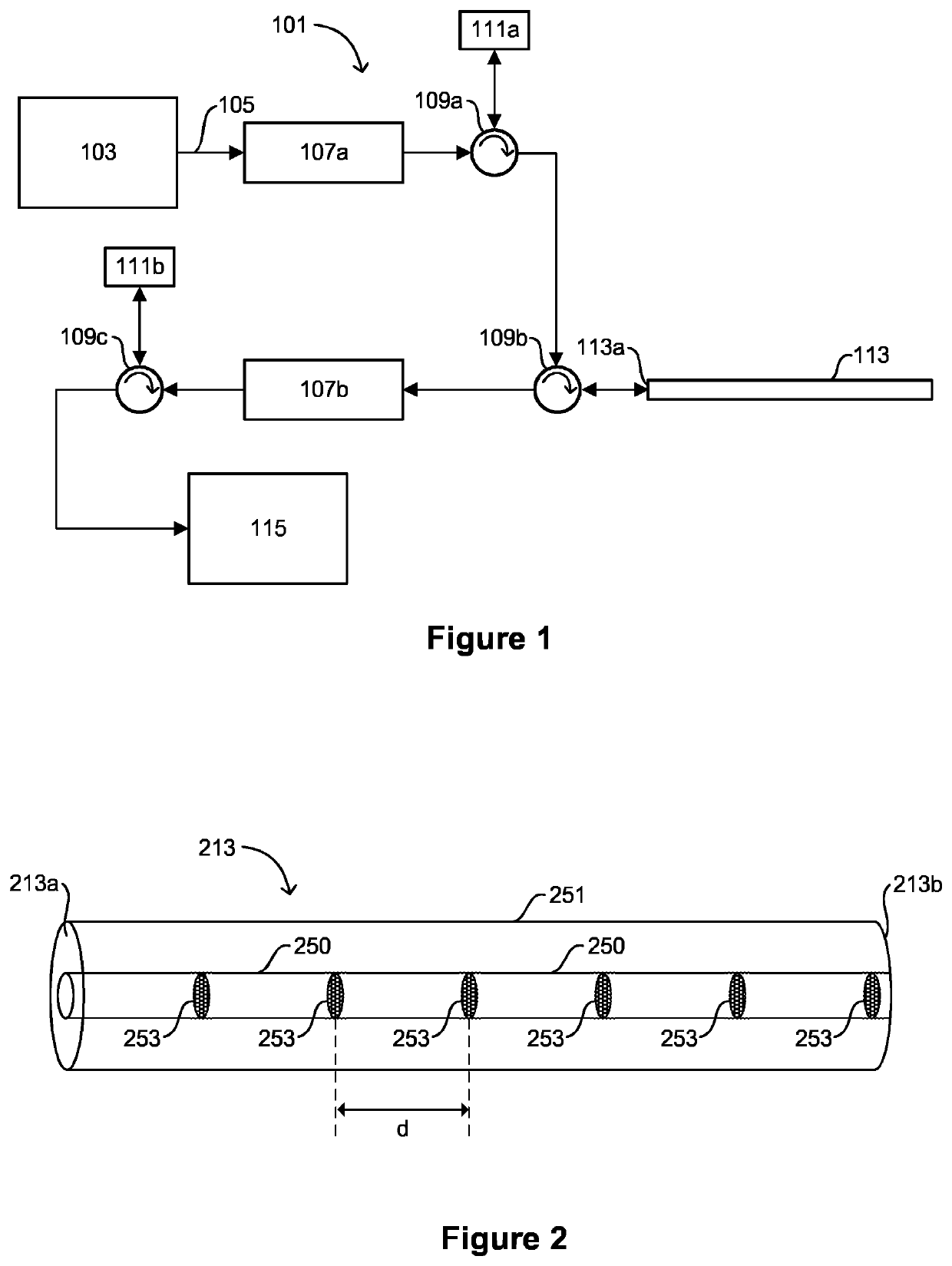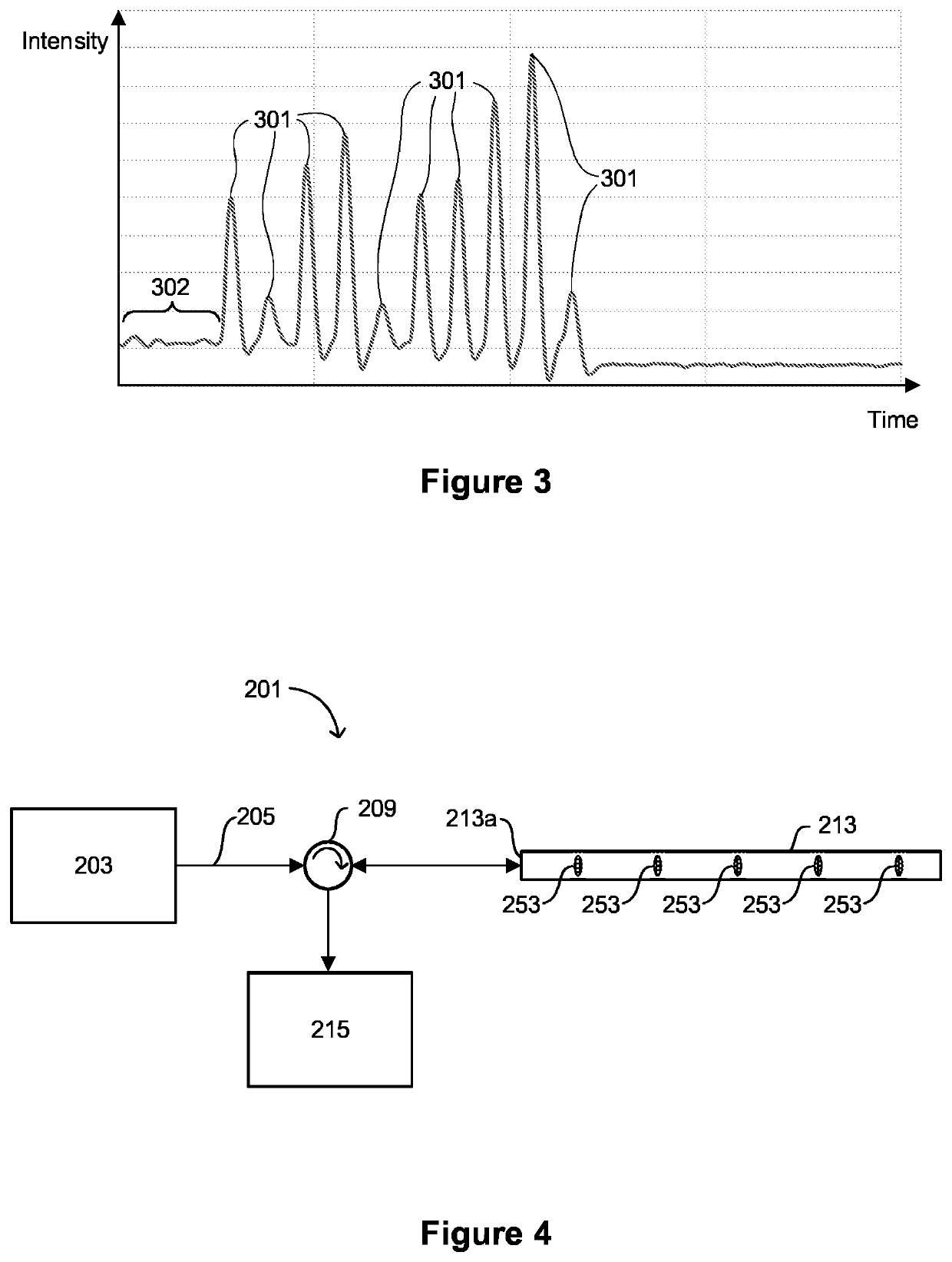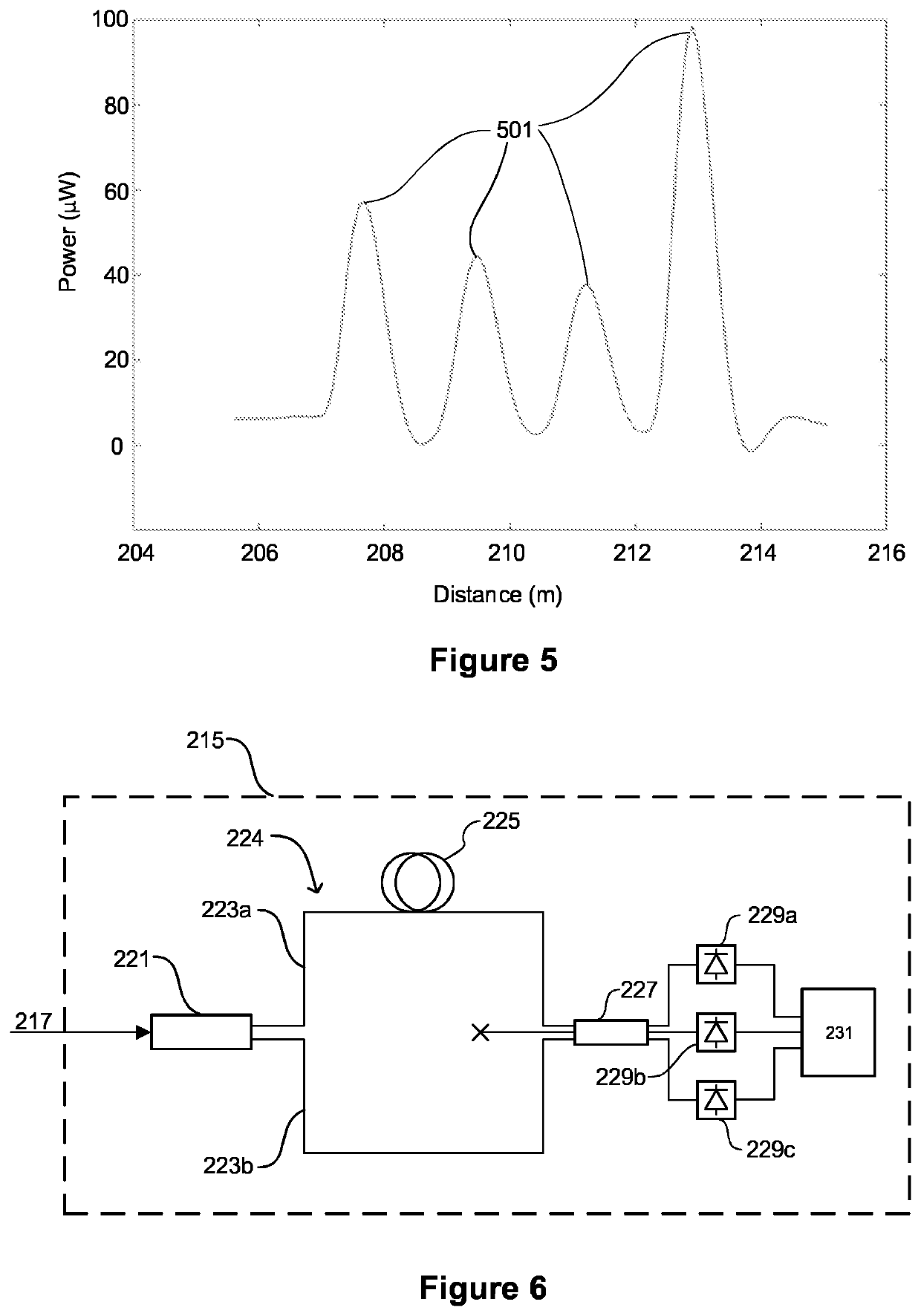Optical fiber sensing
- Summary
- Abstract
- Description
- Claims
- Application Information
AI Technical Summary
Benefits of technology
Problems solved by technology
Method used
Image
Examples
Embodiment Construction
[0104]Before particular examples of the present invention are described, it is to be understood that the present disclosure is not limited to the particular embodiments described herein. It is also to be understood that the terminology used herein is used for describing particular examples only and is not intended to limit the scope of the claims.
[0105]FIG. 2 is a schematic depiction of an optical fiber 213 according to embodiments of the invention. The optical fiber 213 is suitable for use in a sensing system. For example, the optical fiber 213 may be used in a sensing system of the type described above with reference to FIG. 1, where the optical fiber 113 described above is replaced with an optical fiber 213 of the type depicted in FIG. 2.
[0106]The optical fiber 213 comprises a core 250 surrounded by a cladding 251. The optical fiber 213 includes a first end 213a at which radiation may be received so as to couple the radiation into the fiber 213 and a second end 213b remote from t...
PUM
 Login to View More
Login to View More Abstract
Description
Claims
Application Information
 Login to View More
Login to View More - R&D
- Intellectual Property
- Life Sciences
- Materials
- Tech Scout
- Unparalleled Data Quality
- Higher Quality Content
- 60% Fewer Hallucinations
Browse by: Latest US Patents, China's latest patents, Technical Efficacy Thesaurus, Application Domain, Technology Topic, Popular Technical Reports.
© 2025 PatSnap. All rights reserved.Legal|Privacy policy|Modern Slavery Act Transparency Statement|Sitemap|About US| Contact US: help@patsnap.com



